Having a reliable digital partner that not only takes the hassle out of sorting through your digital documents but also brings an extra layer of efficiency to your collaboration efforts. Imagine this partner automatically categorizing your documents into neatly organized sections based on their content, helping you quickly find what you need when you need it. And also adds helpful annotations and even incorporates changes to enhance your documents’ quality.
This smooth workflow is achieved by utilizing the power of PDF.co Document Classifier and PDF Edit Add Helper, are two remarkable tools designed to transform how you manage, interact with, and improve your digital documents. With the help of Zapier the innovative integration platform that brings everything together.
In this guide, we will integrate PDF.co Document Classifier and PDF Edit Add with Zapier to automatically categorize and classify PDF documents based on content, and then enhance them by adding images, watermarks, and text, simplifying document management and collaboration workflow.
- Create a Zap
- Google Drive App
- Setup Trigger
- Test Trigger Result
- Add PDF.co App
- Setup Document Classifier
- Test Action
- Test Result
- Add Another PDF.co App
- Setup Custom API Call
- Test Action
- Result
- Output
- Demo
We have here a sample PDF document, and our objective is to categorize and classify PDF documents based on content and enhance them by adding text, watermarks, and images.
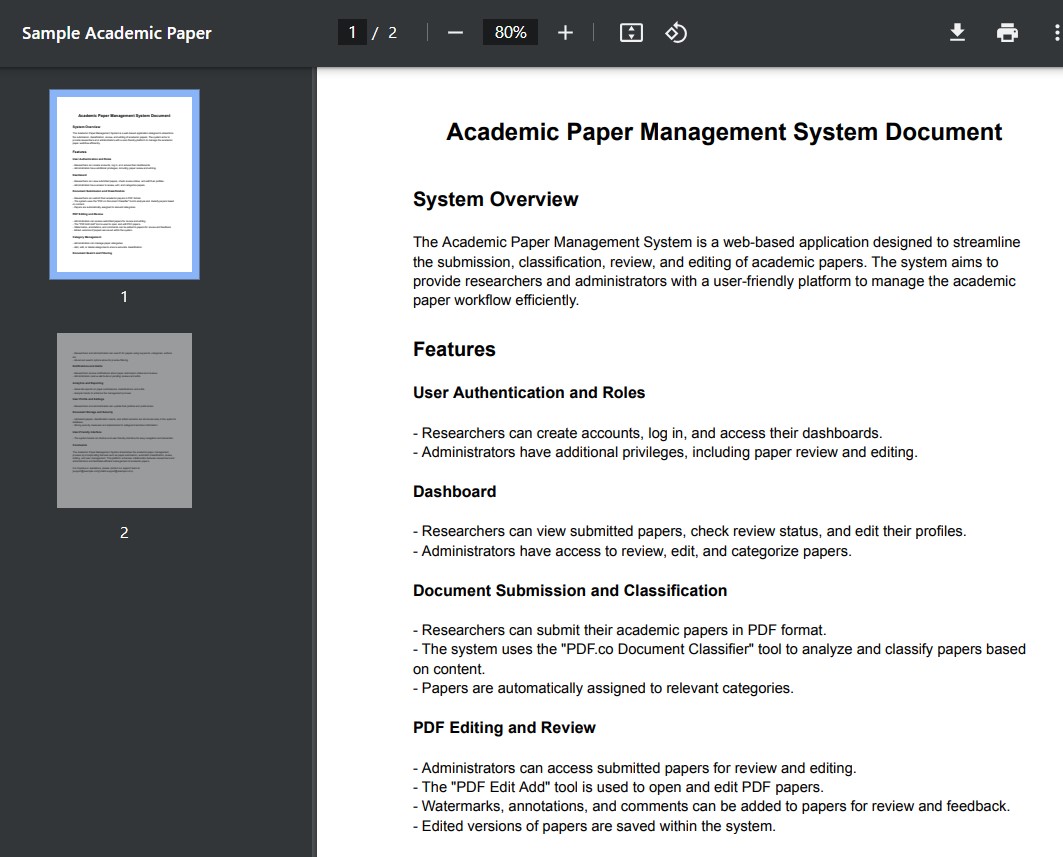
Kindly follow this simple step-by-step guide to easily classify PDF documents and enhance them by adding text and images. So, let’s get started!
Step 1: Create a Zap
Let’s begin by opening your Zapier account and creating a Zap.
Step 2: Add Google Drive App
Next, navigate and select the Google Drive app. Alternatively, you can choose other file storage services if you prefer to retrieve the source file from there.
Then, select the New File in Folder option to activate the Zap whenever a new file is added within a designated folder.
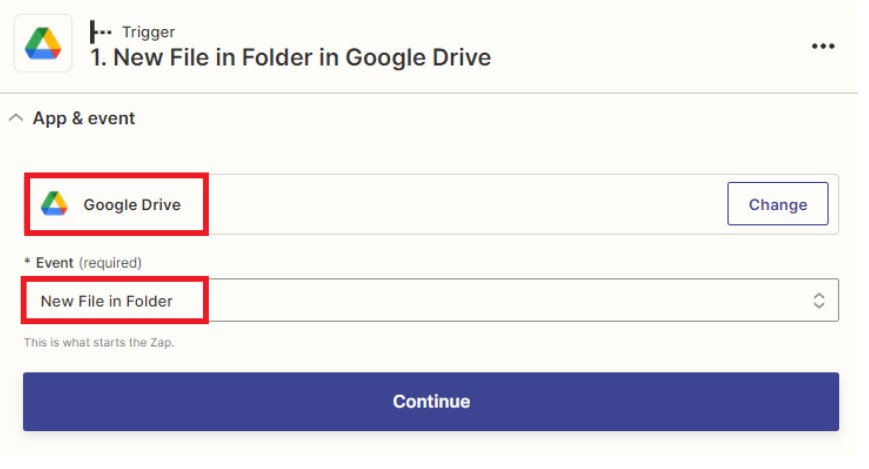
Step 3: Setup Trigger
Let’s proceed with setting up the trigger.
Start by entering My Google Drive as the drive to be used.
Next, select the specific folder where the file was stored.
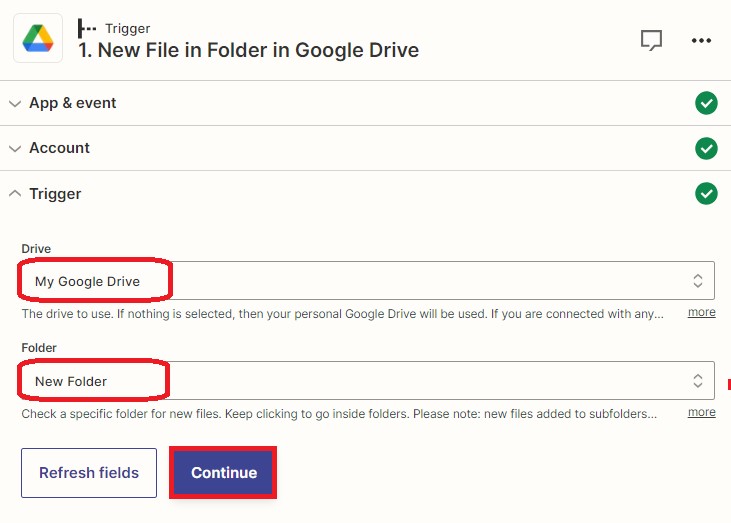
Once you are done setting it up, test the trigger to ensure that we set it up correctly.
Step 4: Test Trigger Result
The test trigger was successful and found a record containing the source file. Now, let’s move to add another app and classify the PDF document based on its content.
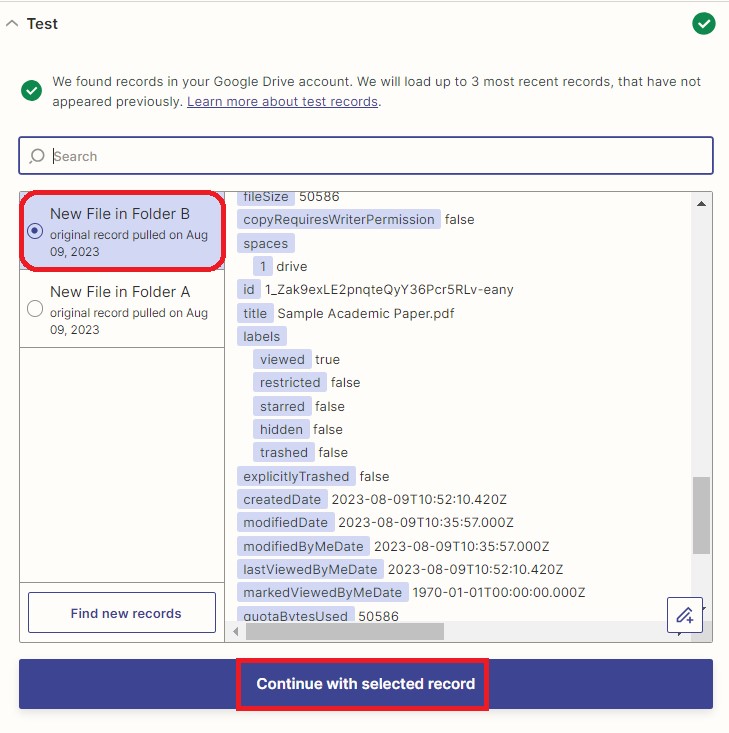
Step 5: Add PDF.co App
In this step, we will incorporate the PDF.co app into the workflow and select the Document Classifier option to classify and categorize the PDF document.
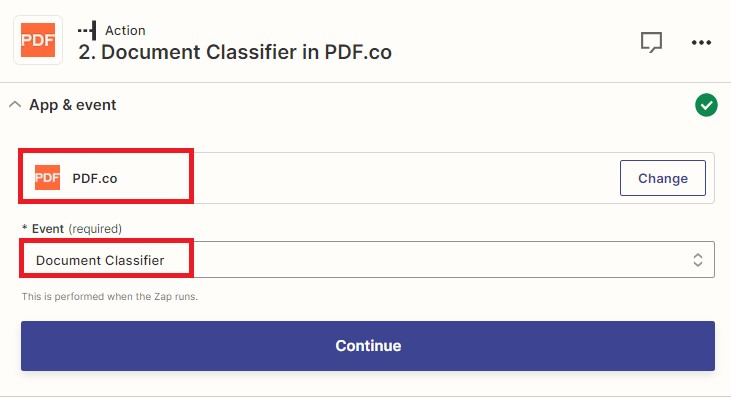
Note: To connect your PDF.co account to Zapier, add your API key. You can obtain the API key from your PDF.co dashboard or by signing up at this link.
Step 6: Setup Document Classifier
Let’s configure the Document Classifier settings.
For the Input Document URL field, select the Web Content Link from Google Drive. This is the link to the source file that has been classified and categorized.
For the Custom Classification Rules field, define specific regulations for data classification to automate document workflows, ensuring accurate and efficient document handling. Utilize PDF.co Document Classifier capabilities to formulate personalized classification rules.
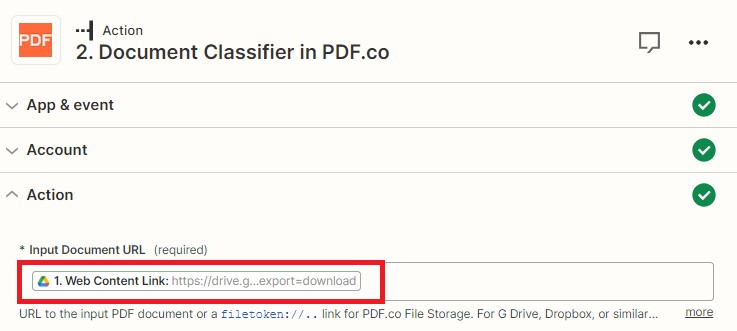
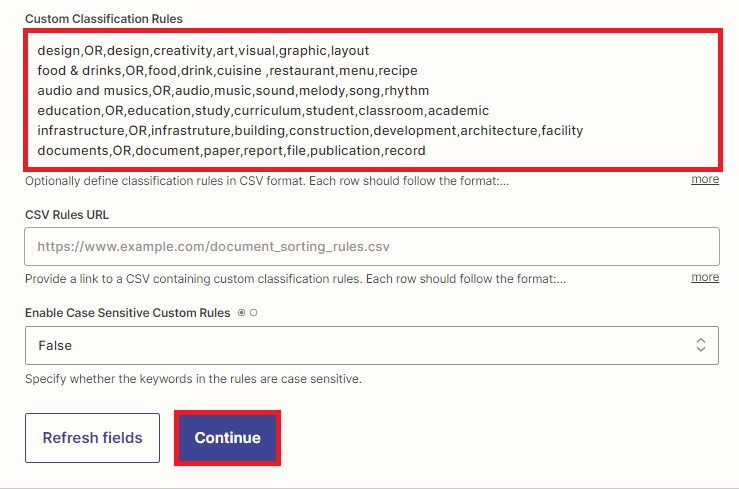
Step 7: Test Action
After setting up, let’s test the action to send a request to PDF.co for document classification and retrieve the corresponding class value.
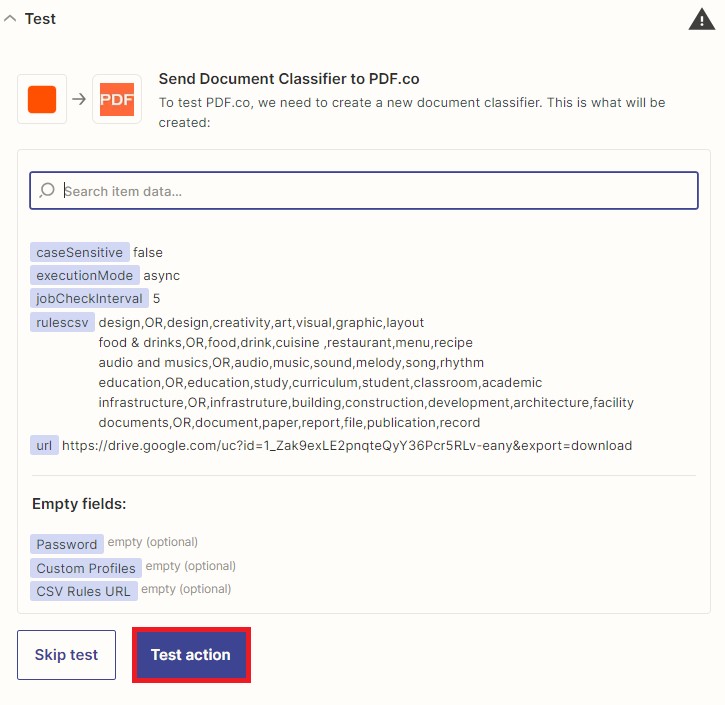
Step 8: Test Result
PDF.co has efficiently categorized the documents and provided their corresponding class values. We will proceed to integrate an additional application for enhancing PDF documents by adding text, watermarks, and images.
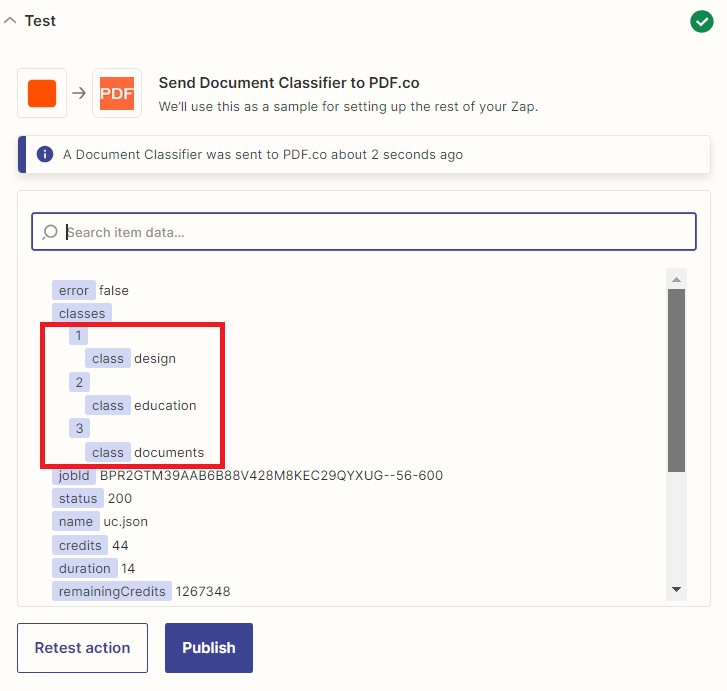
Step 9: Add Another PDF.co App
In the final step, we will integrate an additional PDF.co application and select the Custom API Call feature. This will allow us to utilize the PDF Edit Add API endpoint, simplifying the process of adding text, watermarks, and images to PDF documents.
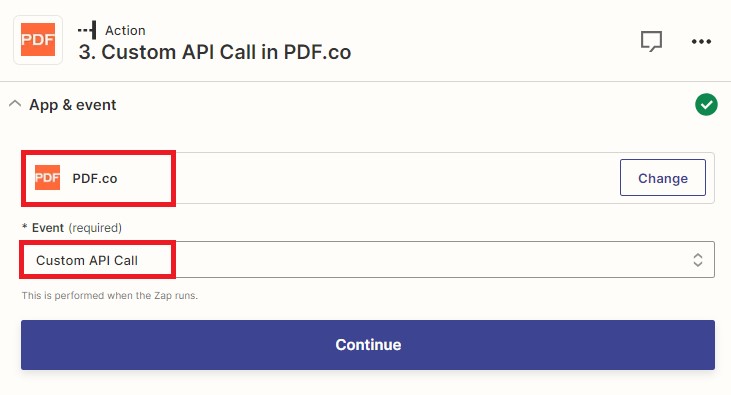
Step 10: Setup Custom API Call
Let’s configure the Custom API Call settings.
In the PDF.co API Endpoint field, choose the v1/pdf/edit/add endpoint. This endpoint enables us to enhance PDF documents by incorporating text, watermarks, and images.
For the URL Input Parameter Override field, select the Web Content Link from Google Drive.
In the Input JSON field, input the JSON code that contains the specifications for text, watermarks, and images. Additionally, define the x and y coordinates where these elements should be added to the PDF document. You can also customize font name, font size, font color, width, and height settings. To better understand, you can refer to this link for a sample JSON code.
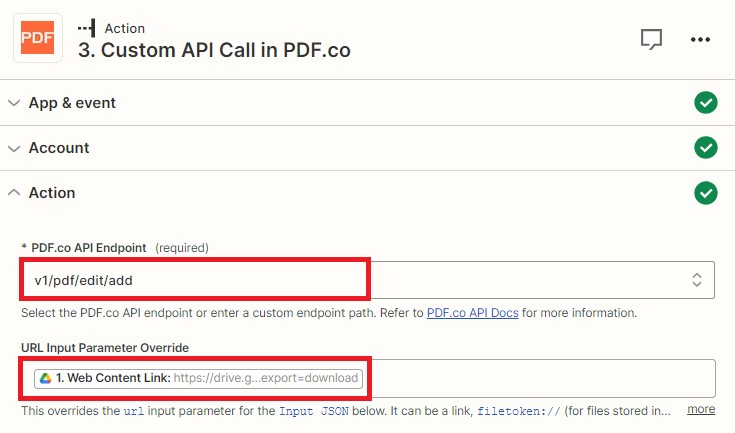
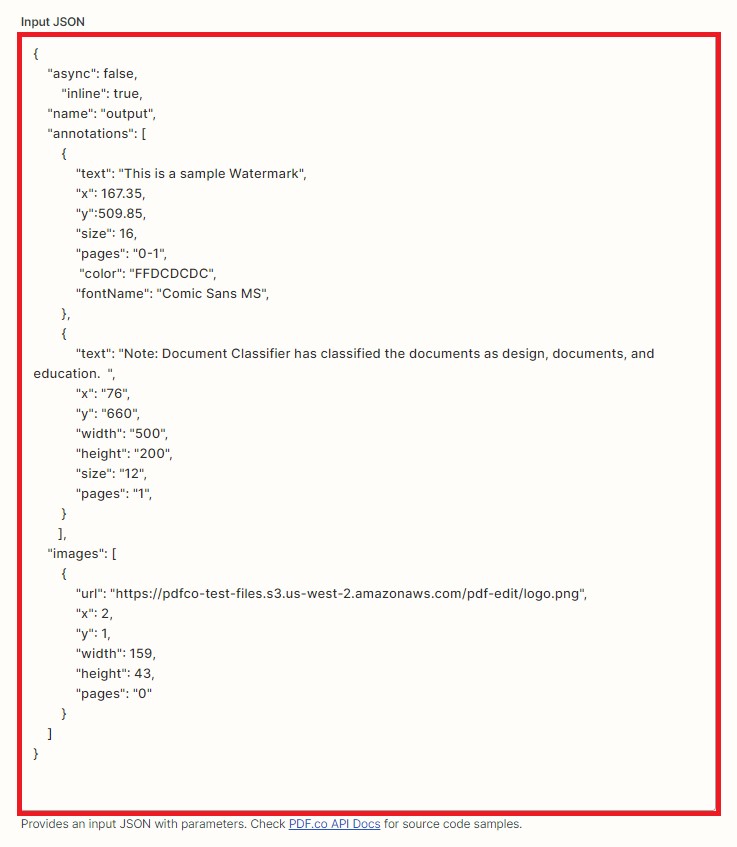
Step 11: Test Action
Once you have done setting up, test the action to send a request to PDF.co and enhance the PDF documents by adding text, watermarks, and images.
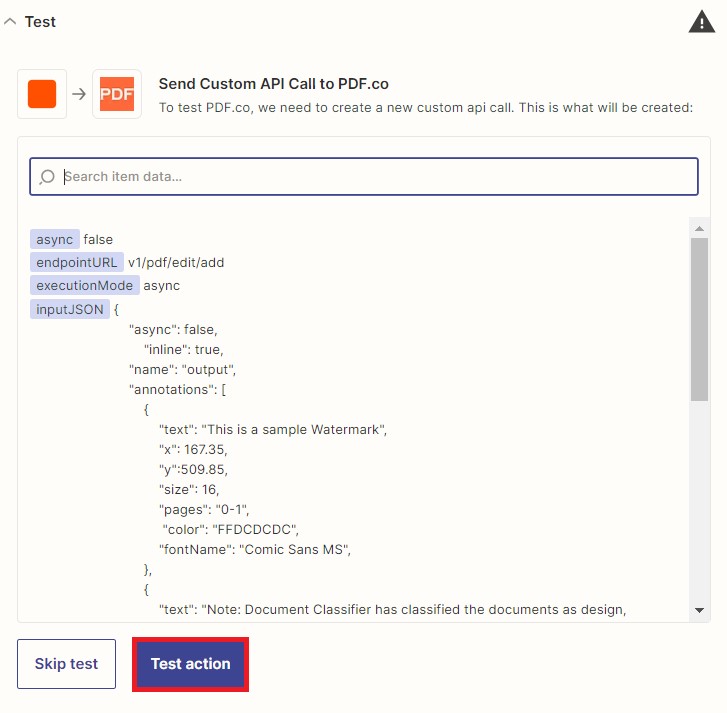
Step 12: Result
The PDF document has been successfully enhanced with the addition of text, watermarks, and images. To review the outcome, kindly copy the generated URL and paste it into your web browser.
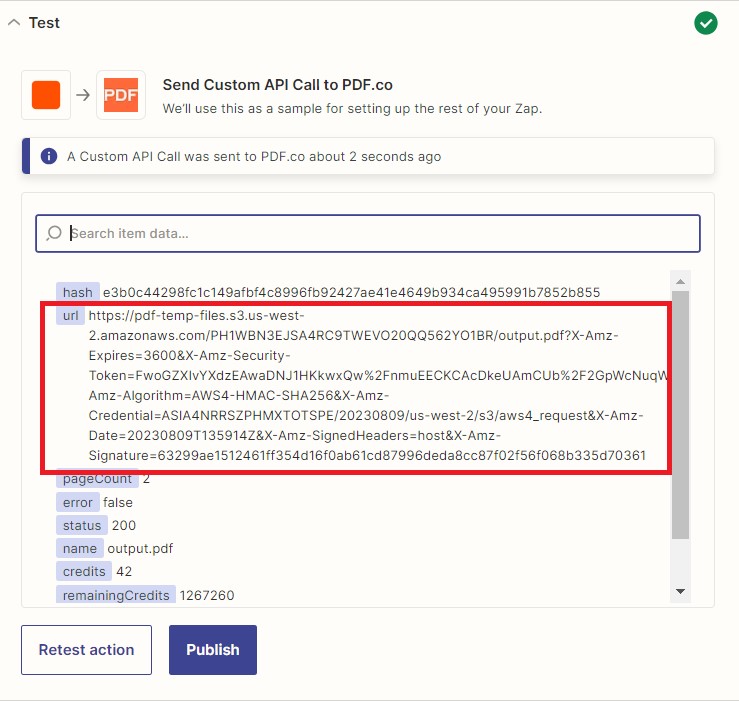
Step 13: Output
Here’s the PDF document that we successfully enhanced using the PDF.co PDF Edit Add API.
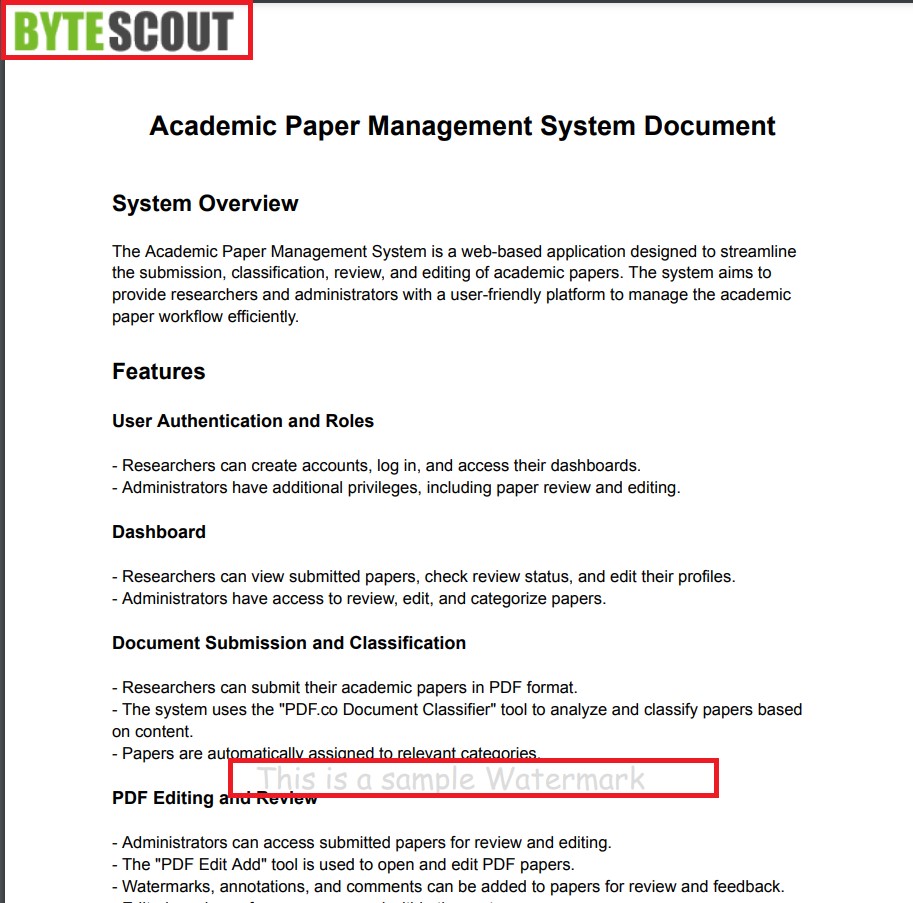
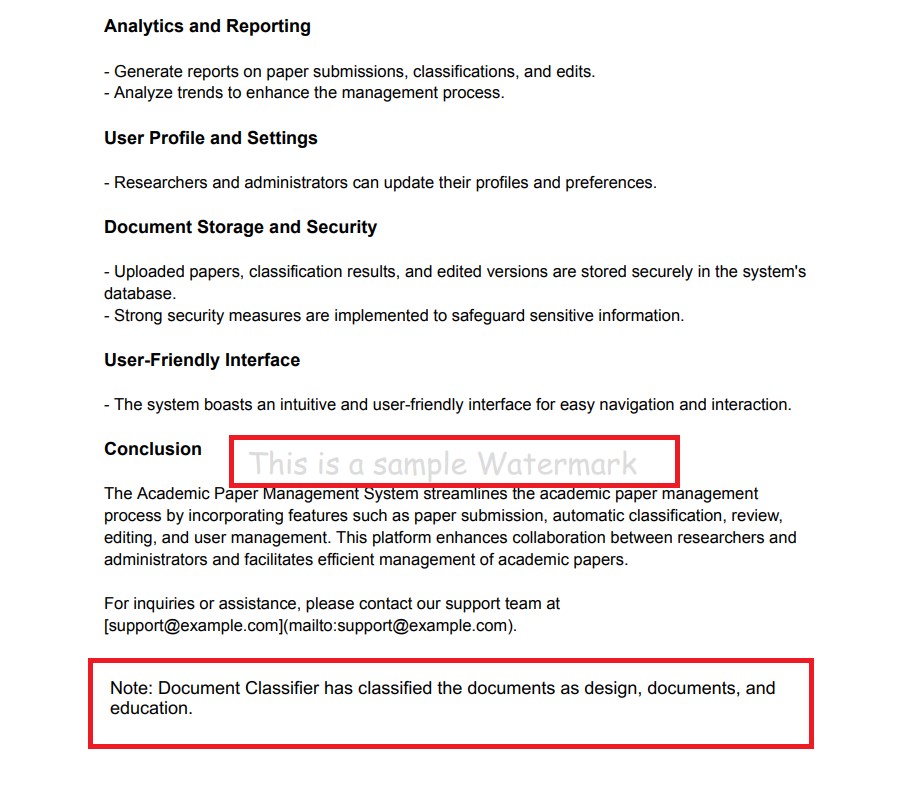
Step 14: Demo
Here’s the PDF.co Document Classifier and PDF Edit Add API in action.
PDF.co PDF Classifier and PDF Edit Add Demo
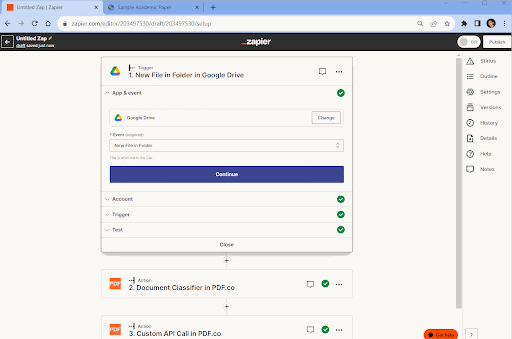
In this tutorial, you learned how to Integrate Document Classifier and PDF Edit Add using PDF.co and Zapier. You learned how to classify and categorize PDF documents based on their content. You also learned how to enhance PDF documents by adding text, watermarks, and images.
Check out our useful articles:
- How to Merge PDF Online
- How to Split PDF Online
- How to Convert PDF to Image Online
- How to Convert PDF to Text Online
- How to Convert PDF to JSON Online
- How to Convert Image to Text Online
- How to Convert Image to PDF Online
- How to Protect PDF Online
- How to Sign and Fill PDF Online
- How to Become a Minimalist Remote Worker
- How to Protect Your Business from Cyber Attacks in 2022
- How to Extract Pages from PDF
- How to Separate Pages from PDF
- TOP-10 Virtual Classroom Tools in 2022
- Ways to Secure Your PDF File
- Cyber Security 101 for Businesses in 2022
- Improve Your Daily Work Productivity
- How to Lead Your Team in Times of Crisis
- Optimize Your Website for SEO
- TOP-11 Businesses that Switched to Remote Work in 2022
- What is PDF and PDF/A
- Beginner’s Guide to Office to PDF
- How to Convert JPEG Format to PDF using PDFlite.co
- PDFlite.co Can be Used as Desktop Apps
- Must-Have PDF Tools for Professionals
- OCR Explained, Why You Need it
- TOP-10 PDF Tools for Remote Workers
- How to Add Page Numbers to PDF using PDFlite.co
- How to Split PDF to Single Pages using PDFlite.co
- TOP-10 PDF Tools for Students
- How to Go Paperless in 2022
- Why Sign with Digital Signature
- TOP-10 Time-Saving Tips for a Productive Day
- How a Digital Signature Works to Secure Documents Online
- How to Hire Generation Z
- How to Onboard Someone Remotely in 5 Steps
- 1040 Schedule C - How the IRS Works for Small Businesses
- How to Digitize School Paperwork in 2022
- How to File a Sales Tax Return in California
- How to Get a Divorce in California
- How to Start Your Own Nonprofit
- Top-Ten Charitable Organizations in 2022
- US Tax Forms in 2022 vs 2021 - What Changed?
- Get Public Assistance for the U.S. Individuals under Major Disaster Declarations
- What PDF Tools Digitally Transform Financial Sector
- Use Simplified PDF Viewer with Coordinates
- How to Convert Any Image to Base64
- How to Convert Scanned Document to PDF and Sign It
- How to Draw a Signature and Save It
- Digital Signatures in Japan
- How Digital Signatures in Ethereum Work
- Digital Signature vs. MAC
- How to Validate Digital Signatures
- Digital Signature vs. Electronic Signature – Features and Differences
- How Digital Signatures in Bitcoin Work
- How to Fill and Sign IRS Forms
- How to Split PDF into Single Pages & Merge Some Back Together
- Advantages of Sending PDF over Word Doc to Your Clients
- Why PDF is More Secure Than Word Docs in Business Communications
- PDF vs. Word Doc: Which Format is Best in Various Situations
- Key Benefits of Dynamic PDF Generation for Customer-Facing Documents
- Traditional Print Documents vs Dynamic PDFs for Environment
- How Dynamic PDF Generation Can Streamline Workflows
- Digital Transformation: The Industries Left Behind and Why It Matters
- Impact of Mobile Devices on the Modern Use of PDFs
- How PDFs Can Be Used for Accessibility and Inclusive Design
- PDF Format Benefits in Sales and E-commerce
- Using PDFs for Digital Signatures and Secure Document Exchange
- Benefits of Using PDFs for Online and Offline Forms
- Simplify PDF Editing with PDF.co PDF Edit Add Helper
- Automate Document Management with Document Parser Template Editor
- Accurate Document Classification with PDF.co Document Classifier
- Enhance API Development with PDF.co Request Tester Tool
- Integrate Document Classifier and PDF Edit Add Helper using PDF.co and Zapier